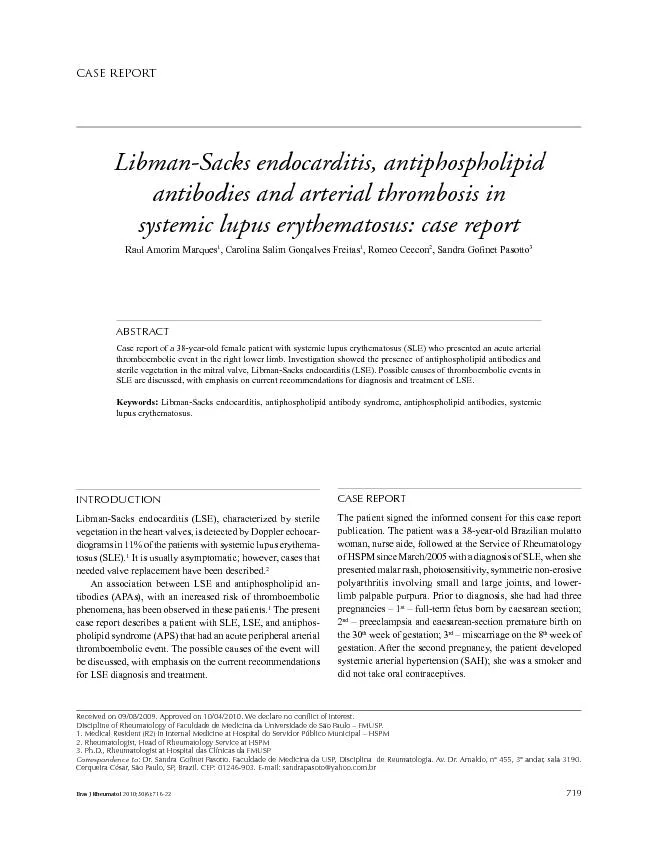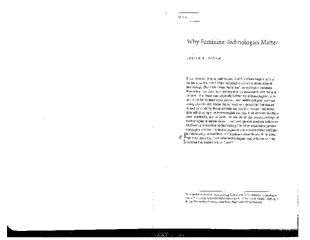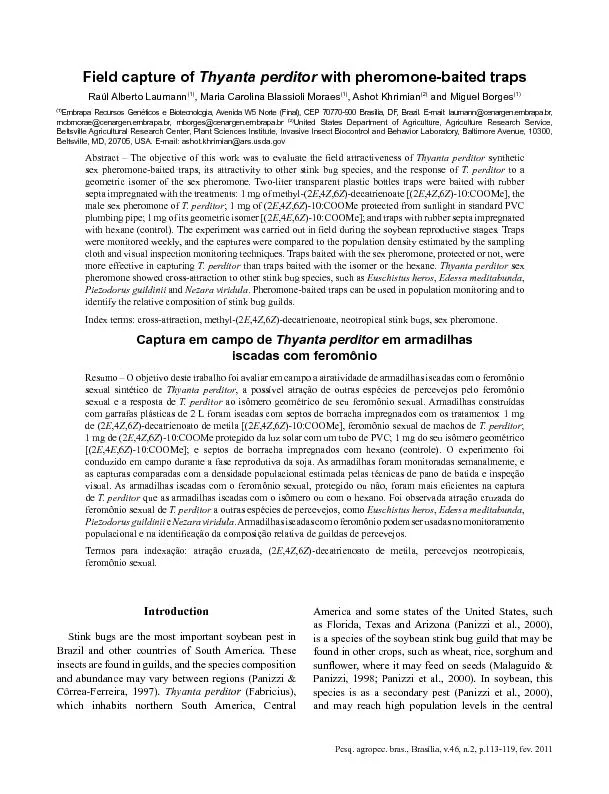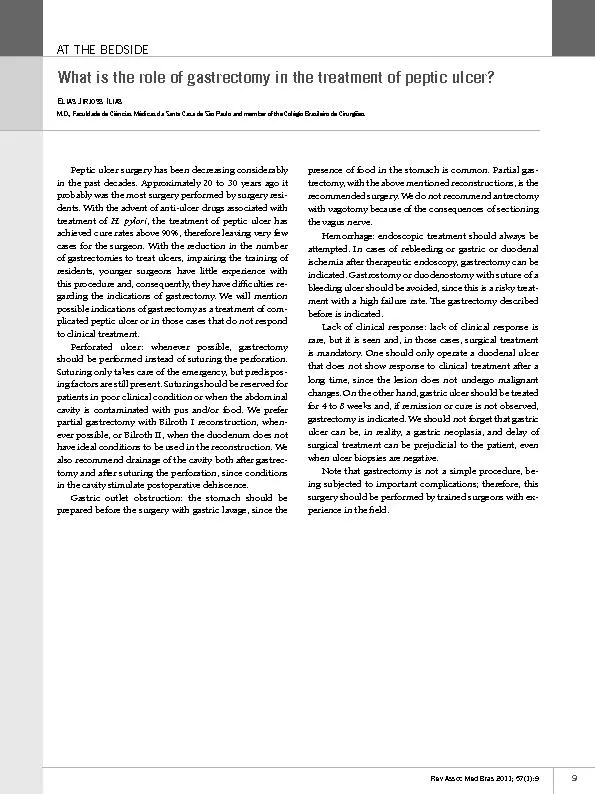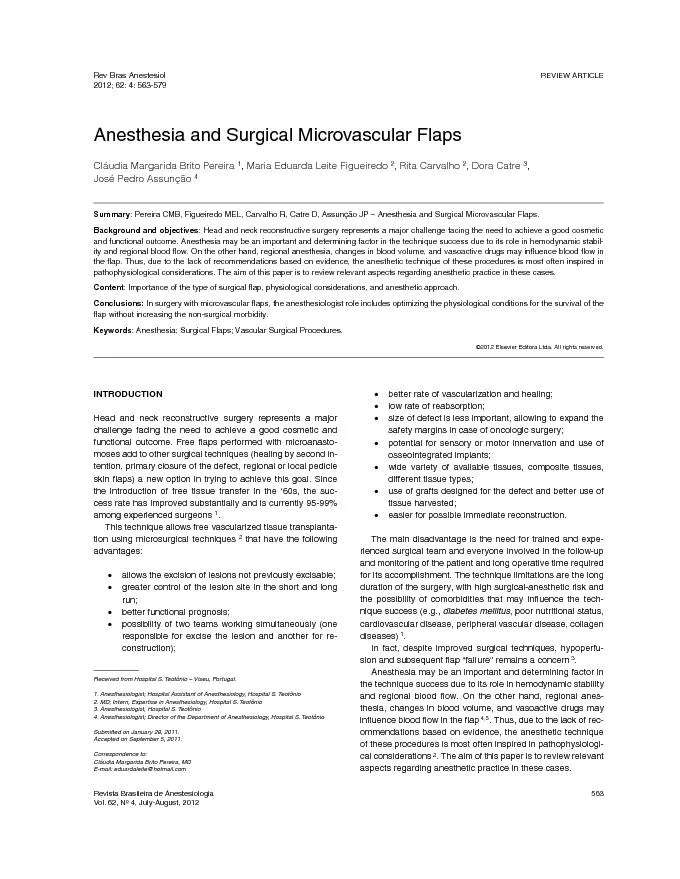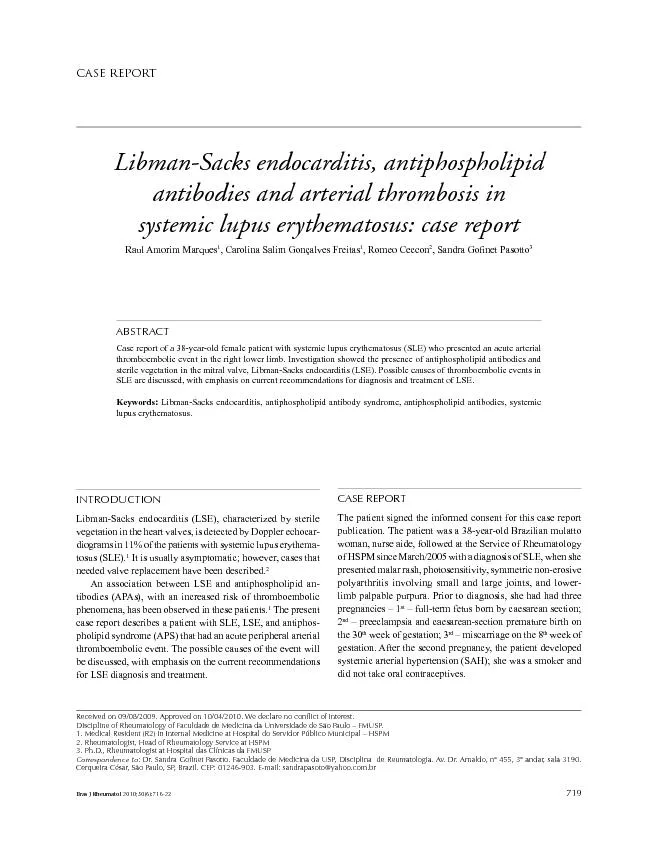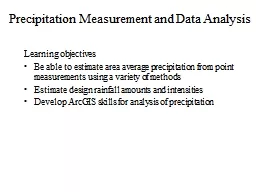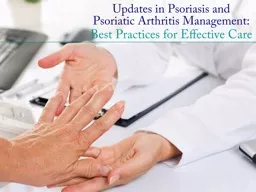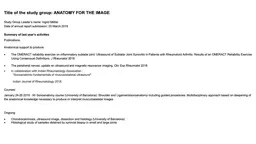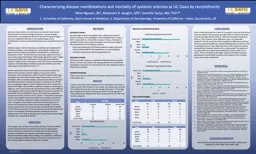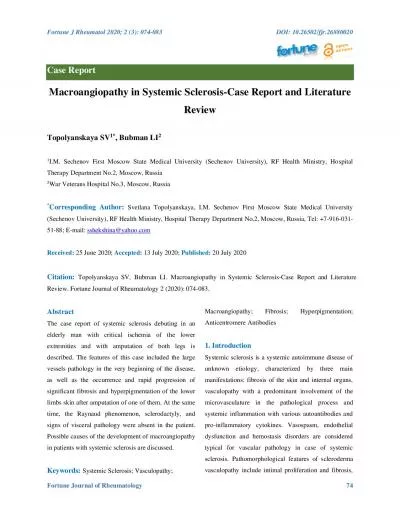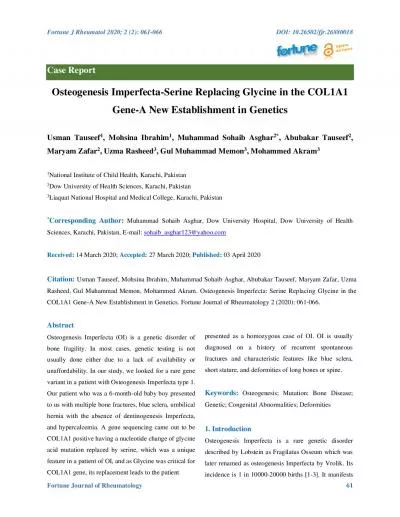PDF-Bras J Rheumatol
Author : briana-ranney | Published Date : 2016-07-27
CASE REPORT 719 201050671622 Received on 09082009 Approved on 10042010 We declare no conict of interest Discipline of Rheumatology of Faculdade de Medicina da Universidade
Presentation Embed Code
Download Presentation
Download Presentation The PPT/PDF document "Bras J Rheumatol" is the property of its rightful owner. Permission is granted to download and print the materials on this website for personal, non-commercial use only, and to display it on your personal computer provided you do not modify the materials and that you retain all copyright notices contained in the materials. By downloading content from our website, you accept the terms of this agreement.
Bras J Rheumatol: Transcript
Download Rules Of Document
"Bras J Rheumatol"The content belongs to its owner. You may download and print it for personal use, without modification, and keep all copyright notices. By downloading, you agree to these terms.
Related Documents

